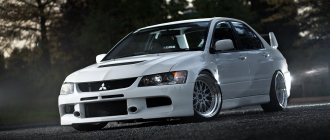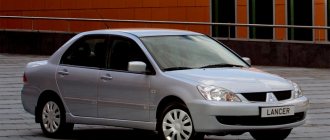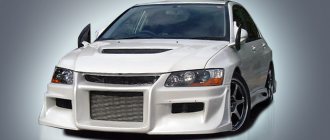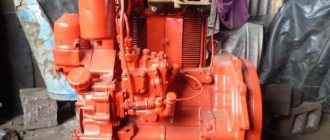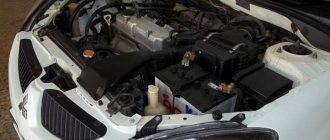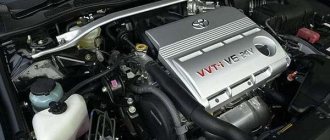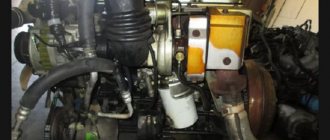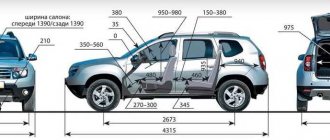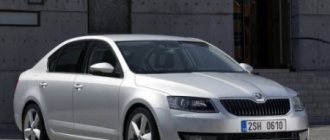Design
This car first appeared in 2005. It became the successor to the previous generation of Lancer Evolution cars. Externally, the eighth and ninth Lancers are very similar. However, this does not apply to the civilian version of the Nine. She looks different.
Yes, this is the very familiar look of the budget C-class sedan. However, the ninth generation version of “Evolution” is radically different from the usual one. Lancer Evo 9 has a stylish and dynamic look. Tuning was done not only inside, but also outside. First of all, this concerns optics. On a regular “nine” it is more modest, triangular and extended towards the top of the wing. Here everything is the other way around. Lancer Evo 9 is a kind of formidable samurai, ready to take off at any second. The car is distinguished by a relief hood, numerous body kits and an aerodynamic bumper. The latter has a special cutout, but not for foglights, but for cold air intake. Looking ahead, we note that this car is turbocharged and equipped with an intercooler, which is why high-quality cooling is so important to it. At the rear, the dynamic image is complemented by a high speller and diffusers. The exhaust is located at the right edge of the bumper. All plastic body kits contribute to better downforce, which is necessary at high speeds.
As for the dimensions, they are almost identical to the civilian Lancer (at least they fit into the C-class). Thus, the length of the Mitsubishi Lancer Evo 9 is 4.5 meters, width – 1.77 m, height – 1.45 m. The rear and front track widths are the same and equal to 1515 millimeters. The ground clearance is very small, as confirmed by the owners of the Mitsubishi Lancer Evo 9. The tuning makes itself felt - 14 centimeters is only enough for perfectly smooth roads. It is better not to go outside the city in this car. Those who want to tune their Mitsubishi Lancer 9 for Evo should take this into account.
AutoGourmand
Mitsubishi Lancer Evolution
, or Mitsubishi Lancer Evo - a sporty version of the Mitsubishi Lancer.
Made in a sedan body (the IX generation was also produced with a station wagon body). Externally it differs from the standard Lancer in its bumper, hood, spoiler, and extended fenders.
It has a more powerful turbocharged engine (until the 10th generation, the 4G63 was installed, which is famous for its performance in difficult conditions), a more rigid body, all-wheel drive, a manual, automatic or robotic gearbox with two clutches. Automatic transmissions were installed on the Evolution 7 GT-A and Evolution 9 station wagon, a robotic gearbox was installed on the Evolution 10.
There are currently 10 generations of Mitsubishi Lancer Evolution.
Evolution IX Wagon
The Lancer Evolution Wagon first rolled off the assembly line in September 2005. The station wagon is built on the basis of the Lancer Evolution IX sedan.
At the same time, the station wagon body almost completely copies the sedan, with one important exception: it is made more durable and robust than that of the Evolution sedan. The body was strengthened by increasing the stiffness coefficient of its pillars, as well as by generally strengthening the structure.
At the same time, the Evolution Wagon body does not weigh too much, since it contains a significant number of aluminum parts. The robust, monocoque-like body structure provides excellent driving characteristics and excellent handling. The interior of the station wagon, as well as its exterior, largely copies the Evolution IX sedan.
The steering wheel is made by the famous company MOMO, and the pedals are complemented with aluminum pads. The front seats are from Recaro and are covered with genuine leather and knitwear. The interior door handles and air direction controls are chrome-plated. The rear seats are covered with knitted and leatherette covers.
The backs of the rear seats can be fully reclined, which allows you to expand the luggage space of the cabin. However, the trunk of the Evolution station wagon is smaller than that of the Lancer Cedia Wagon. The noise level inside the Mitsubishi Lancer Evolution Wagon is significantly lower than that of the Lancer Evolution sedan, thanks to the use of special acoustic materials.
There were two versions of the station wagon available for sale. The drive type on both trim levels is permanent 4WD. The car's chassis is equipped with an ACD (Active Central Differential) system.
An LSD differential is installed on the rear axle, which allows you to achieve maximum effective control over wheel movement on a track with any surface. Another distinctive feature of the station wagon's chassis are Bilstein shock absorbers and Brembo brakes.
- GT
- 6-speed manual transmission and 2000cc inline 4-cylinder engine with MIVEC DOHC system, turbocharging and intercooler. Its maximum power is 280 hp, maximum torque is 40 kg/m. - GT-A
- equipped with a 5-speed automatic transmission and a 2000cc inline 4-cylinder engine with a DOHC system, turbocharging and intercooler. The power of the Mitsubishi Lancer Evolution Wagon in this configuration is 272 hp, and the maximum torque is 35 kg/m.
2005 Mitsubishi Lancer Evolution IX WAGON
Mileage – 117,000 km
Rare factory body Evolution IX - station wagon, (Mitsubishi Racing).
From the factory, the car was equipped with: 4G63 engine with a power of 280 hp and a torque of 396 N/m. Mechanical 6-speed gearbox RS gearbox with locking (in common parlance “Cast Iron”) Recaro front seats MOMO steering wheel.
Our Wagon is also equipped with a titanium exhaust system, with a downpipe and outlet specially welded for it.
Price: 910,000
auto.ru
In contact with
Salon
The inside of the car is not as surprising as the outside. There are still hard plastics and civilian panel lines. The steering wheel is three-spoke, with a very comfortable grip. The center console has all the necessary controls. On more “evil” versions, “boost” sensors are additionally installed. The seats, unlike the civilian versions, are made of high-quality Alcantara and have pronounced lateral support (one might say, full-fledged “buckets”).
The speedometer on the dashboard has a scale of 0-270, the tachometer is designed for 9 thousand revolutions - this is certainly not the case in the civilian Lancer. The sportiness of the interior is added by the factory pedals, stylized as aluminum. Driving the Lancer Evo 9 is quite comfortable - the steering wheel is adjustable in two directions, the seat seems to envelop you from all sides. There is a sufficient supply of seat adjustments on both the driver's and passenger's seats. At the rear there is a three-seater sofa with a center armrest. It has built-in cup holders. There is enough space in the back, despite the fact that the Lancer Evo 9 belongs to the C-segment.
Handling Mitsubishi Lancer Evolution 9
Weighing more than 1300 kg, the Mitsubishi Evo 9 behaves on the move in such a way that this heaviness is not felt at all. The car instantly responds to steering wheel turns. You just have to turn it, and the front of the car seems to take off. The engine responds immediately to the accelerator pedal, although of course the presence of a turbocharger also manifests itself already at relatively low speeds. The use of aluminum, titanium and magnesium in the engine, which significantly reduces its weight, also affects its efficiency and has a positive effect both when driving in the city and when racing on country roads.
Recommended article: Mitsubishi delica (Mitsubishi Delica) - technical specifications
The presence of a powerful turbocharger is immediately noticeable. However, the uniform increase in torque is no less clearly noticeable. As a result, the car picks up speed very smoothly, without abrupt transitions. To a large extent, the mitsubishi lancer evolution 9 owes such lightness to the work of the suspension, which takes on all the excess thrust developed by the engine if excess gas is supplied to it. If you make the suspension too stiff, the car will start to roll very much when turning. The use of such a suspension allows you to clearly feel the approaching moment of loss of traction between the wheels and the road and the transition to skidding. If you don’t react in time, the car will go into disarray. The Mitsubishi Evo 9's suspension has a very large “capacity” of dynamic travel. That is, even if the driver “overdoes” the gas, the excessive sharpness of the engine will be instantly reduced, as if it will get stuck in the “deep niche” of the suspension. On a road with numerous turns, this feature immediately makes itself felt. In a positive sense, the car does not turn into a turn, but easily “flips”, which allows the driver to control the car with the accelerator pedal constantly pressed. By the way, this feature increases the actual speed of movement.
Of course, it cannot be said that all the body parts of the Mitsubishi Evolution 9 are so balanced that turning should always go smoothly. But the car is equipped with three differentials (one main and one each on the axles), which are almost perfectly matched to each other. This allows you to enter the turn very confidently.
Specifications
The main difference between the Evolution model is its powerful engine. Under the hood of the Lancer Evo 9 there is a two-liter turbocharged engine with an extended diffuser and a variable valve timing system. The unit is located transversely relative to the body. The motor is marked 4G63.
Japanese engineers tried to get the most out of this two-liter engine. And they managed to do it. Thanks to the turbine and other technical implementations, the maximum engine power is 280 horsepower. Torque at 3.5 thousand revolutions is 355 Nm. This engine is paired with a six-speed manual transmission. There are no automatic transmissions for the Mitsubishi Lancer 9-Evolution.
Modification 2.0 S20 - technical specifications
Body Number of seats 5 Number of doors 4 Body type Sedan
Dimensions Length, mm 4490 Width, mm 1770 Height, mm 1450 Wheelbase, mm 2625 Front wheel track, mm 1515 Rear wheel track, mm 1515 Ground clearance, mm 140 Curb weight, kg 1465 Curb weight, kg 1885 Trunk volume, l 430 Volume fuel tank, l 55
Recommended article: Mitsubishi l200 (Mitsubishi l200) - review, price, technical specifications
Engine Engine location - front transverse Engine volume, cc 1997 Cylinder arrangement In-line Number of cylinders 4 Number of valves 16 Power system Distributed injection Turbocharging Yes Power, horsepower 280 Torque, N*m at rpm 355 at 3500 Fuel type Gasoline
Transmission Gearbox Mechanical Number of gears 6 Drive All-wheel drive
Suspension Front independent, MacPherson strut with stabilization of lateral stability Rear independent, multi-link with stabilization of lateral stability Brake system characteristics Front brakes Disc, with ventilation Rear brakes Disc
Steering Power steering Power steering Turning diameter, m 12
mitsubishi evolution 9
Operational characteristics Maximum speed, km/h 250 Acceleration time (0 - 100 km/h), s 5.7 Fuel consumption (in the city), liters per 100 km 14 Fuel consumption (combined), liters per 100 km 10 Fuel consumption (extra-urban cycle), liters per 100 km 8 Emission standard Euro Euro IV
The price of a Mitsubishi Evo 9 in Russia is no less than 700,000 rubles.
Chassis
The chassis design is identical to the previous generation of Evolution cars. There is an independent MacPherson suspension at the front and a multi-link at the rear. On ordinary Lancers a beam is installed. In technical terms, not only the engine was improved, but also the braking system. The front features four-piston calipers and Brembo ventilated disc brakes. At the rear there are two-piston calipers. The diameter of the brake discs is 320 millimeters (front – 20 mm more). The car uses all-wheel drive. The rear axle is locked by a hydromechanical clutch. The center differential can be controlled from the interior. Electronics allows you to transfer torque to the wheel that has the best grip on the road surface. This eliminates slipping.
Price
The Mitsubishi Lancer 9-Evolution was produced serially until 2007, so you can only find a copy on the secondary market. The initial cost of the car was 600 thousand rubles. However, there are also more modernized versions (the modifications are made by the owners themselves) costing 1 million rubles.
The basic equipment of Evolution includes the following elements:
- 2 front airbags;
- climate control;
- 4 power windows;
- "Momo" sports seats and steering wheel;
- ABS system;
- hydraulic power steering.
Second generation[ | ]
1979 Mitsubishi Lancer II 1979
Lancer EX
was shown in Japan, with only three types of engines:
1.4 liter MCA-JET
, with proprietary technology “Mitsubishi's Silent Shaft Technology” (Russian: Mitsubishi silent shaft technology) producing 80 hp.
With. (60 kW). 1.6 l
, power 85 hp.
With. (63 kW) 1.6 l
, power 100 hp. With. (75 kW)
The MCA-JET system was a newer technology than carburetor engines. MCA (from the English Mitsubishi Clean Air - Russian Mitsubishi clean air) - a fuel vapor recovery system, as well as a device for reducing crankcase gas emissions, created for the purpose of environmental protection; an original system for reducing exhaust gas toxicity was used, making the car fully compliant with all environmental standards standards of Japan and the USA, while the new design of the engine cylinder heads made it possible to place a third valve (or Jet valve), which provided additional air flow into the combustion chamber, increasing the efficiency of the fuel oxidation (combustion) process. Another new Lancer product is Silent Shaft technology (Russian: quiet shaft), which consists of two shafts that balance each other, rotating in different directions, thereby reducing vibration and noise levels and providing a smoother ride. MCA-JET achieved high fuel economy (4.54 L/100 in the 10-mode fuel economy test, and 3.12 L/100 km at 60 km/h in the dyno test).
The 1.8 L Sirius 80 engine was added to the range in 1980, along with a new 1.2 L (70 hp [52 kW]) engine. Also in 1980, a turbocharged 135-horsepower (99 kW) engine was introduced for sports modifications, and in 1983, a 165-horsepower (121 kW) engine with turbocharging and intercooler was introduced.
Japanese modifications and modifications of the car[ | ]
| It is necessary to check the quality of the translation and correct content and stylistic errors. You can help improve this article. The original is not indicated. Please indicate it. |
- 1400SL - 4-door sedan, with a 1.4L engine, with a 4-speed manual transmission. A 5-speed gearbox was also introduced (1979–1987)
- 1200SL - same as SL, with 1.2 engine (1979-1983)
- 1400GL - SL with 3-speed automatic transmission (1979-1983)
- 1400SL A/T - same as SL, with minor changes (1983-1987)
- 1600XL - 4-door sedan, 1.6L engine, 3-speed automatic transmission (1979-1983)
- 1600XL Super - same as XL, with minor changes (1983-1987)
- The 1800SE is a 4-door sedan, powered by a 1.8L producing 100 hp engine, and available with a 5-speed manual transmission or a 3-speed automatic transmission. (1981-1983)
- 1800GSR Turbo - 4-door sedan, powered by a turbocharged 1.8L engine producing 135 hp, with aesthetic upgrades (1981–1983)
- 1800GT Turbo - Same as GSR (1981-1983)
- 1800GSR Turbo Intercooler - Intercooled version of the first turbo version, producing 160 hp (1983–1987)
- 1800GT Turbo intercooler - same as GSR turbo intercooler (1983-1987)
- The 1800GSL Turbo is the same as the GSR turbo intercooler, only it used the engine from the GSR/GT Turbo, and equipped a 3-speed Au
Modifications
Despite such a short production period, the car was subjected to various changes, in particular by professional tuning studios. Thus, the British versions of the Evolution car were equipped with FQ engines with a power of 300, 320 and 340 horsepower.
At the same time, the working volume of the 4-cylinder engine remained the same - two liters. The increase in power had a positive effect on dynamic performance. The car accelerated to hundreds in 4.1 seconds. Peak speed is 253 kilometers per hour. This modification had the index MR. For other markets, Mitsubishi was equipped with the same 280-horsepower engine. The only differences were in the exterior - the car had different aerodynamic body kits and rims.
Main course of modernization
As you know, all Lancer Evo models were released for the purpose of a certain modernization. Thus, the 9th generation Evo has a major improvement course associated with the appearance of a 2-liter 4G63 power plant, assembled using the unique advanced MIVEC technology. This engine features a more efficient turbine and an all-around better intercooler.
One of the most charismatic cars on the planet, the Evo 8, offers the widest possibilities in terms of exterior design. The already overly aggressive Lancer Evolution 8 can be turned into a full-fledged road conqueror.
The new engine increased the car's power to 291 hp. It was said above that this Mitsubishi Lancer Evo 9 power plant could develop even more power. The British, in particular, could choose a version with a 340-horsepower engine. True, on the European market there was a modification with a 280-horsepower unit of the same type.
